Number3.24 | Procedure NameTransporting Hazardous Materials Between Campuses Procedure |
SponsorLudwig Stuart | CustodianCampus Operations |
Effective Date2018-2019 | Next Review DateSpring 2019 |
Location | Citation |
Procedure
Transportation of Hazardous Materials1 between Durham Tech Campus locations shall adhere to the following safety precautions even though we are exempt from the federal DOT regulations under 171.1(d)(5).
The proper Personal Protective Equipment (PPE) will be used when handling unpackaged bottles
Hazardous materials stored in non-original bottles will be properly labeled with the chemical name and GHS hazard symbol or text. Original manufacturer containers will already have this identification.
Hazardous materials shipping containers will follow the provisions listed above for Required Packaging under 49CFR 173.6 and list the chemical name, primary hazard class (see appendix below) and approximate quantity on the outside of shipment packaging. A person with hazardous materials handling experience will package or inspect the packaging prior to self-transportation for containers not in their original commercial shipment packaging. Contact the Safety Officer if you need assistance.
When handling bloodborne pathogen materials, we will adhere to the OSHA 29 CFR 1910.1030 standard. Biohazardous materials such as needles and syringes and other “sharps” will be sealed in specially designed sharps containers (usually used to collect and store these materials) and can be transported without further packaging unless they contain liquids that could leak. “Sharps” containers with liquids that could leak will be placed in a secondary sealed container with absorbent material and labeled on the outside with the biohazard symbol and a description of the contents. Biohazardous materials such as contaminated gloves, disposable lab coats, plastic pipettes, and other contaminated wastes (no “sharps” allowed) would be placed in a sealed thick plastic bag labeled on the outside with the biohazard symbol and a description of the contents.
Safety Data Sheets [SDS or MSDS] will be available on the Durham Tech website for all materials shipped. Paper copies will be carried for highly hazardous materials. Examples of highly hazardous materials include concentrated acids, bases, highly flammable liquids and highly toxic substances2 . Examples of materials where a SDS paper copy would not be carried would include low toxicity wastes and dilute solutions.
No Class 1 explosives, pyrophorics or extremely hazardous substances (GHS Category 1 “Fatal if inhaled”) will be self-transported. No radioactive wastes are to be self-transported. (see Alternative Transportation below)
We will voluntarily adhere to the Material Limits under 49CFR 173.6 that have been listed above.
1 Commercial carrier or Durham Tech shipping department deliveries are not covered by this document.
2 For the purposes of this document, “highly” is defined as GHS Category 1 or NFPA Diamond rating 4. Consult the (M)SDS for substance Categories & Ratings.
Drivers will have the required training (see Required & Recommended Training section below) and are expected to check-out a college van, fire-extinguisher (if transporting flammables) and spill clean-up kit for transportation between sites. Kits include basic PPE for minor spills.
Alternative Transportation: As an alternative to self-transportation, contact the Durham Tech receiving department and request delivery of a vendor shipment to the site where needed.
Required and Recommended Training
Required: SafeColleges Chemical Spills Overview or equivalent completed.
Required: SafeColleges Hazard Communication: Right to Understand (GHS or equivalent completed.
Recommended: SafeColleges Personal Protective Equipment (PPE) completed.
Recommended: SafeColleges Van Safety completed.
Required: read the Durham Tech Emergency Action Plan and Safety Manual: Chemical Hygiene Plan.
Purpose/Definitions
The US Department of Transportation (DOT) regulates and restricts the transportation of hazardous materials over public roads and highways. There are times when Durham Tech employees need to self-transport hazardous materials between Durham Tech sites for various purposes including laboratory resupply.
49CFR 171.1(d)(5): The Primary Provision We Are Following3
DOT rules list specific functions that are exempt from the federal standard when hazardous materials are being transported for noncommercial purposes. The exemption applies to “transportation of a hazardous material in a motor vehicle, aircraft, or vessel operated by a Federal, state or local government employee solely for noncommercial Federal, state, or local government purposes.” 171.1(d)(5)
49CFR 173.6, Materials of Trade Exception4
Another provision, 49CFR 173.6, Materials of Trade Exception, allows the transport of limited amounts of hazardous materials necessary for the conduct of business, as long as that business isn't transportation, without requiring such things as: a Commercial Driver’s License, formal shipping papers, placards, etc. But there are certain restrictions – some of which are described below.
Material Limits under 49CFR 173.6:
For most chemicals: Single containers of no more than 30 kg (66 pounds) or 30 liters (8 gallons).
For gas cylinders: Gross weight of cylinder no more than 220 pounds.
Total GROSS weight of all hazardous material is 200 kg (400 lbs)
Things You May Not Transport under 49CFR 173.6:
Explosives, Pyrophorics, materials classified as Inhalation Hazards and Hazardous Wastes.
Required Packaging under 49CFR 173.6:
Packages must be leak tight for liquids and gases, sift proof for solids, securely closed, secured against movement, and protected against damage.
Each material must be packaged in the manufacturer's original packaging, or a packaging of equal or greater strength and integrity.
Additional packagings are not required for "receptacles" (e.g., cans and bottles) that are secured against movement in cages, carts, bins, boxes or compartments. Note, however, biological specimens may require inner and outer packaging and secondary containment is recommended.
Other Requirements under 49CFR 173.6:
The operator of the motor vehicle must know what he/she is carrying, have a copy of the pertinent Material Safety Data Sheet, and be prepared to deal with spilled material.
Hazard Classes regarding 49 CFR 173.2:
| CLASS 1 | CLASS 2 | CLASS 3 | CLASS 4 | CLASS 5 |
|---|---|---|---|---|
| Explosives | Gases | Flammable Liquids ‹=(37.8°C / 100°F) | Other Flammable Substances | |
 | 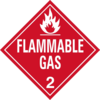 | 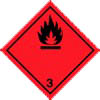 | 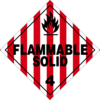 | 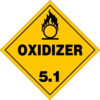 |
| CLASS 6 | CLASS 7 | CLASS 8 | CLASS 9 |
|---|---|---|---|
| Toxic (Poisonous) & Infectious Substances | Radioactive materials | Corrosives | Miscellaneous hazardous materials |
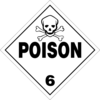 | 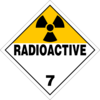 |  | 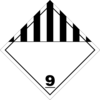 |
| 3 Hazardous Materials Regulations (HMR) PDF 4 Materials of Trade Exception (PDF) |

